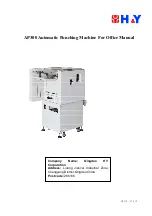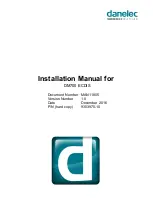
LeadCare Ultra
®
Blood Lead Testing System User’s Guide
7-2
Problem Area
Check the Following
Testing Conditions
•
Avoid operating the LeadCare Ultra System in drafts or outside the
specified temperature range 16°C - 30°C (61°F - 86°F) and specified
humidity range (12 - 80%, Relative Humidity).
•
Make sure that the system and the test kit are maintained at a constant
temperature. If you move any part of the system from one place to
another, wait for the analyzer and components to reach a stable
temperature.
User Technique
•
Make sure the control or blood sample and treatment reagent mixture is
thoroughly mixed before placing onto the sensor.
o
A control in treatment reagent mixture will remain red after mixing.
o
A blood sample in treatment reagent will turn brown after mixing.
•
Make sure the sample mixture is at room temperature before placing onto
the sensors.
•
Keep sensor vial closed. Remove sensors from vial only when ready to run
samples.
•
Add 30 µL of the sample/treatment reagent or control/treatment reagent
mixture to the sensor.
•
Do
NOT
touch the sensor while the analyzer is running a test.
•
Make sure the collection container is at least half full.
Table 7-2: Results Above the Target Range or Expected Value
Problem Area
Check the Following
Sample Type
•
CONTROLS:
o
Make sure the control lot being used is the same lot number of the
sensors in the kit being used.
•
PATIENT BLOOD SAMPLE:
o
Use only capillary whole human blood collected with EDTA or
Heparin anticoagulant. Do
NOT
use venous. Do NOT use plasma
or serum.
o
Make sure the sample is free of clots.
o
Make sure the sample is < 72 hours old and has been stored at
room temperature or in the refrigerator.
o
Bring the sample to room temperature before use.
o
Make sure EDTA capillary blood collection devices are at least half
full to be considered an acceptable sample.
Blood Sampling
•
Lead is widespread in the environment. It is easy to contaminate a blood
sample. Ensure that the sample being tested came from a collection site
that was thoroughly cleaned with soap and water followed by a clean
alcohol wipe prior to capillary blood collection.
•
Use clean powder-free gloves during testing.
•
Use calibrated pipettes and pipette tips to transfer precisely 50 µL of
control into the treatment reagent tube.
•
Make sure the pipette tip is filled properly. The accuracy of the test
depends on filling the pipette tip with 50 µL. Excess blood on the outside of
the pipette tip may produce higher blood lead test results.
Содержание LeadCare Ultra
Страница 16: ...LeadCare Ultra Blood Lead Testing System User s Guide 2 6 This page intentionally left blank ...
Страница 62: ...LeadCare Ultra Blood Lead Testing System User s Guide 6 20 This page intentionally left blank ...
Страница 92: ...LeadCare Ultra Blood Lead Testing System User s Guide 11 2 This page intentionally left blank ...
Страница 96: ...LeadCare Ultra Blood Lead Testing System User s Guide 13 2 This page intentionally left blank ...
Страница 102: ...LeadCare Ultra Blood Lead Testing System User s Guide A 4 This page intentionally left blank ...
Страница 103: ...LeadCare Ultra Blood Lead Testing System User s Guide B 1 ...
Страница 104: ...LeadCare Ultra Blood Lead Testing System User s Guide B 2 ...
Страница 116: ...LeadCare Ultra Blood Lead Testing System User s Guide B 12 This page intentionally left blank ...
Страница 118: ...LeadCare Ultra Blood Lead Testing System User s Guide C 2 This page intentionally left blank ...
















































